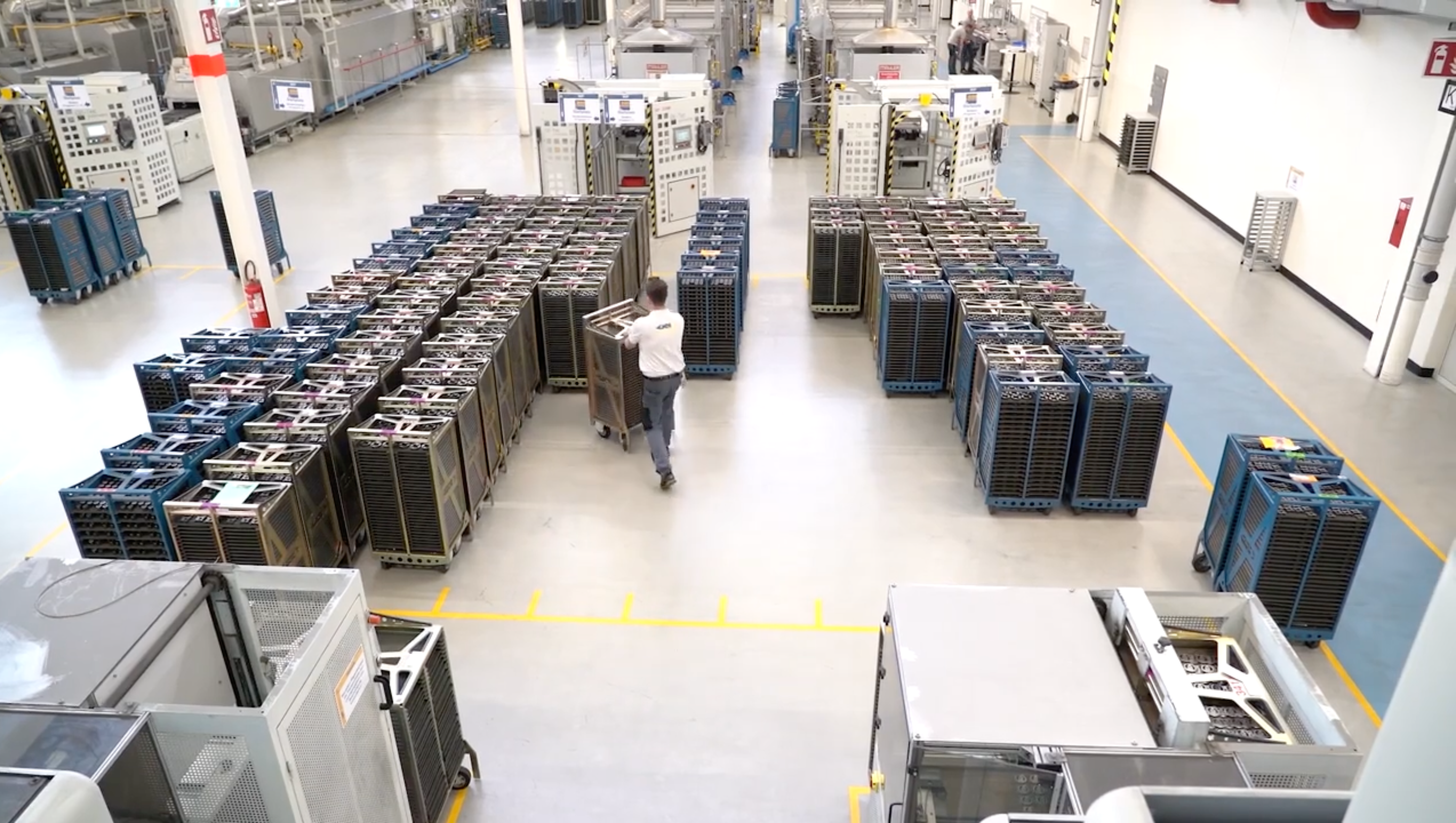Understanding why your manufacturing performance isn’t hitting targets often starts with one metric: Overall Equipment Effectiveness (OEE). This guide explains what OEE is, why it matters, how to measure it, and how you can dramatically improve it across your operations.
What is OEE?
OEE (Overall Equipment Effectiveness) is the standard metric used to assess how effectively a manufacturing operation is utilized compared to its full potential. It combines three critical factors—Availability, Performance, and Quality—into a single percentage that reflects the true productivity of your equipment.
In practical terms, OEE answers the question: “How much of the time that our equipment is scheduled for production is actually productive?”
Why you should care about OEE
If you’re aiming to reduce downtime, eliminate waste, improve throughput, and gain better ROI from your manufacturing assets, OEE is your guiding metric. Monitoring OEE helps operations teams pinpoint inefficiencies and prioritize improvements based on data.
Low OEE often reveals hidden losses like micro-stops, slow cycles, or excessive changeover times—problems that would otherwise remain invisible.
Breaking down the OEE formula
OEE is a product of three individual metrics:
- Availability – the ratio of operating time to planned production time.
- Performance – how fast the process runs as a percentage of its maximum speed.
- Quality – the ratio of good units produced to total units started.
Here’s the formula:
OEE = Availability × Performance × Quality
A perfect score of 100% indicates zero downtime, optimal speed, and zero defects—an ideal yet rare scenario.
The three pillars of OEE
Understanding Overall Equipment Effectiveness (OEE) begins with its three fundamental components: Availability, Performance, and Quality. Each pillar pinpoints a distinct type of loss that impacts productivity, offering valuable insights into where improvements are most needed.
1. Availability loss
Availability measures the ratio of actual operating time to planned production time. It captures all forms of equipment downtime, whether planned or unplanned.
Common causes of availability loss include:
- Unplanned Downtime: Unexpected equipment failures, breakdowns, or material shortages that halt production.
- Planned Stops: Activities such as changeovers, machine setups, or preventive maintenance that, while scheduled, still reduce production time.
For example, a packaging line might have a scheduled 30-minute changeover between products but often experiences delays due to missing tools or incomplete materials. By digitizing and standardizing the changeover process using solutions like Workerbase’s digital work instructions, manufacturers can reduce changeover times and minimize planned downtime—thereby improving Availability.
2. Performance loss
Performance captures speed-related losses—when equipment runs slower than its maximum design capacity. This includes not only mechanical slowdowns but also process-related issues that reduce throughput.
Typical performance losses include:
- Micro-Stops: Short, frequent interruptions often caused by misfeeds, jams, or operator interventions.
- Slow Cycles: Equipment consistently runs below its design speed due to suboptimal settings or operator habits.
For example, an injection molding machine might experience frequent minor stops that go unreported because they’re too short to log manually. Workerbase’s real-time monitoring and alerts help surface these hidden losses, allowing teams to address root causes like worn parts or training gaps. Moreover, our automation editor ensures operators can focus on production instead of manual record-keeping—reducing non-value-adding activities that eat into Performance.
3. Quality loss
Quality loss measures defective products, whether they’re scrapped outright or require rework. This includes products that don’t meet customer specifications, even if they can be reworked later.
Common sources of quality loss are:
- Process Variation: Inconsistent process conditions, such as fluctuating temperatures or incorrect settings.
- Material Defects: Poor-quality raw materials leading to defective finished goods.
- Human Error: Mistakes made during manual interventions or changeovers.
For instance, a bottling line might produce off-spec bottles due to incorrect fill levels or misaligned labeling equipment. Workerbase’s digital quality checklists and automated data capture streamline defect detection and enable immediate corrective actions, reducing quality-related losses.
Common causes of poor OEE
Understanding where losses occur is critical for driving improvement. Typical causes include:
- Unscheduled Downtime: Due to breakdowns or lack of materials
- Suboptimal Scheduling: Frequent or long changeovers
- Slow Processes: Inefficient machine settings or operator habits
- Poor Quality Control: Resulting in high scrap rates
How to improve OEE: proven strategies
Improving OEE isn’t a one-size-fits-all effort, but these strategies have proven effective across industries:
1. Implement preventive maintenance
Scheduled and predictive maintenance reduces the risk of unexpected breakdowns, boosting availability.
2. Optimize changeovers
Using SMED (Single-Minute Exchange of Die) techniques can significantly reduce changeover times.
3. Deploy real-time monitoring tools
Solutions like Workerbase’s real-time shopfloor apps offer instant visibility into machine and operator performance, identifying micro-stops and inefficiencies as they happen.
4. Train and empower operators
Involve operators in continuous improvement by giving them tools to track and improve their own performance.
5. Standardize work instructions
Consistent SOPs ensure that best practices are followed across shifts and locations, reducing quality and performance variation.
OEE and lean manufacturing
OEE is a core element of lean manufacturing and Six Sigma methodologies. It supports continuous improvement by providing a quantifiable measure of waste in terms of lost time, speed, and quality. The best lean environments leverage OEE data to prioritize Kaizen activities and justify capital expenditures.
FAQs about OEE
Q: What’s the difference between OEE and TEEP?
A: TEEP (Total Effective Equipment Performance) considers all available time, not just scheduled time, and includes equipment utilization.
Q: Is OEE relevant for batch production?
A: Absolutely. Even with batch processes, downtime and quality issues impact effectiveness and profitability.
Q: How frequently should I track OEE?
A: Ideally in real-time. However, daily or shift-based reports are useful if real-time tracking isn’t yet feasible.
Conclusion: How Workerbase helps you improve OEE
At Workerbase, we empower manufacturers to boost Overall Equipment Effectiveness (OEE) by digitizing and automating the key processes that impact Availability, Performance, and Quality. Our real-time platform connects machines, operators, and processes, providing actionable insights and continuous feedback that drive measurable improvements.
For Availability, Workerbase’s real-time downtime tracking and digital work instructions reduce unplanned stops and speed up changeovers—ensuring equipment runs consistently.
For Performance, our integrated monitoring tools highlight slow cycles and process bottlenecks, while our automation editor eliminates time spent on non-value-adding tasks and manual communication—keeping production on pace with demand.
For Quality, Workerbase digitizes inspections and integrates real time alerts, reducing scrap and rework while ensuring compliance.
By transforming manual processes into automated, data-driven workflows, Workerbase ensures every team member contributes to higher OEE—making your factory more efficient, agile, and profitable.
Want to start turning OEE into a competitive advantage with Workerbase today? Get in touch with us below!




